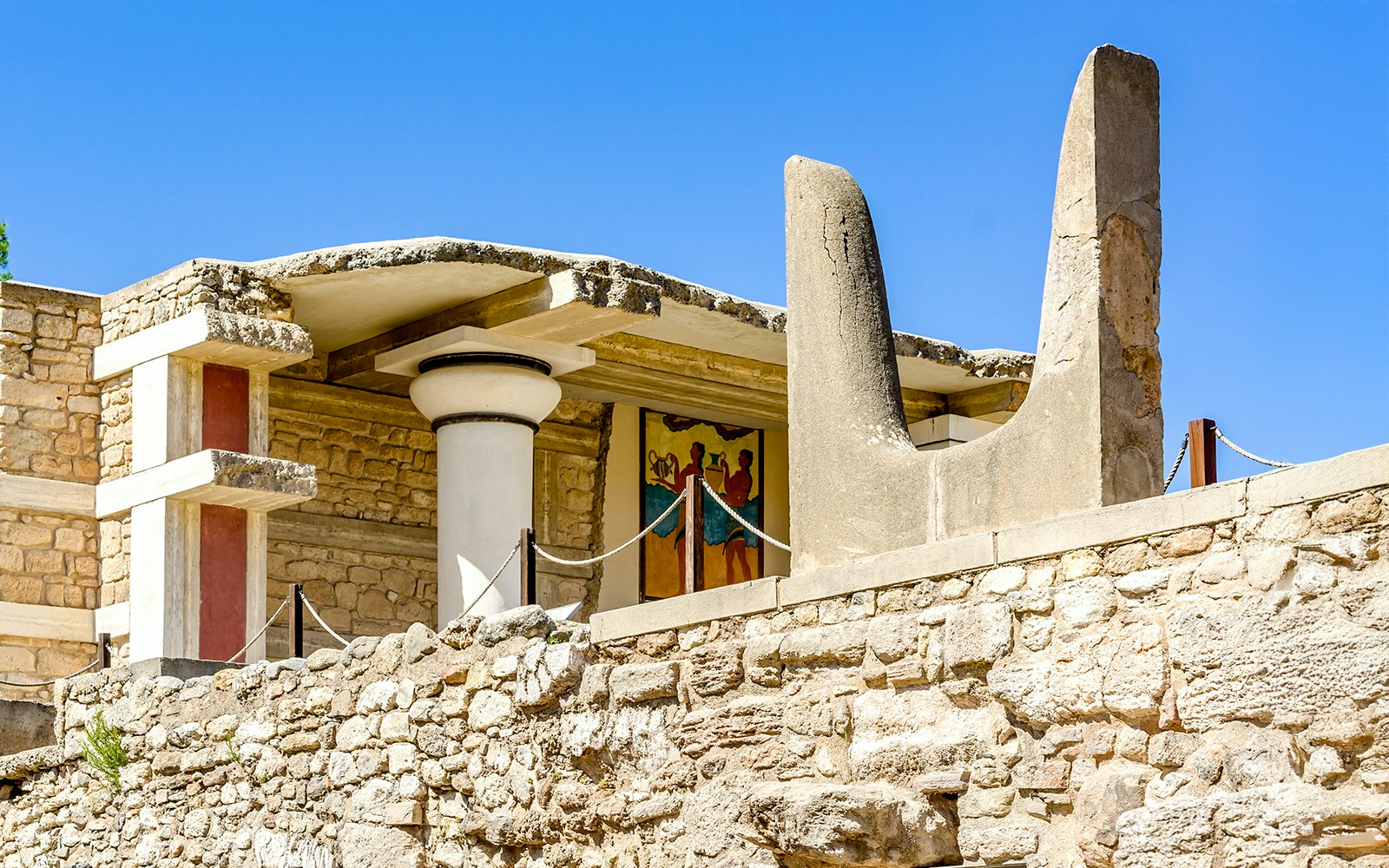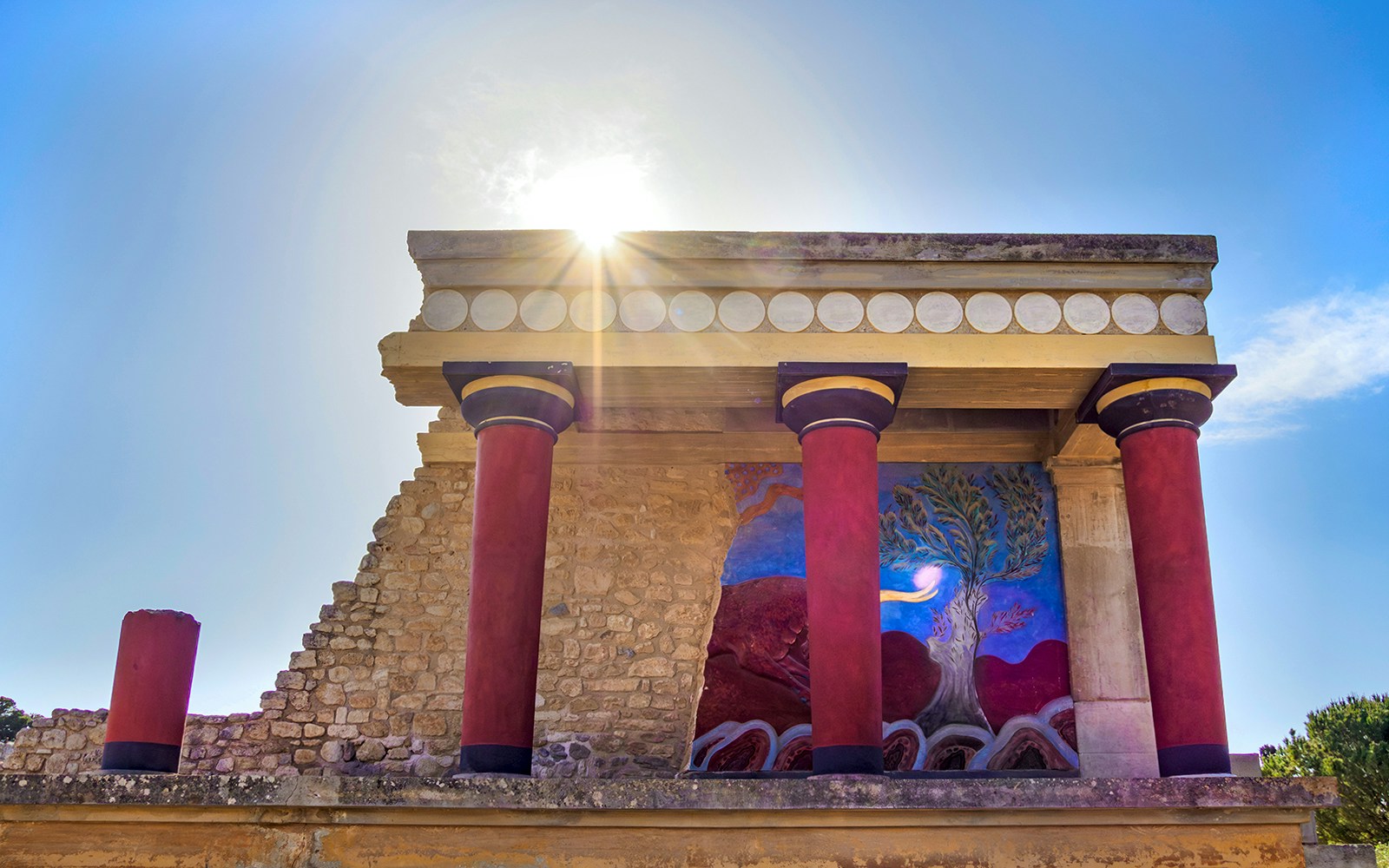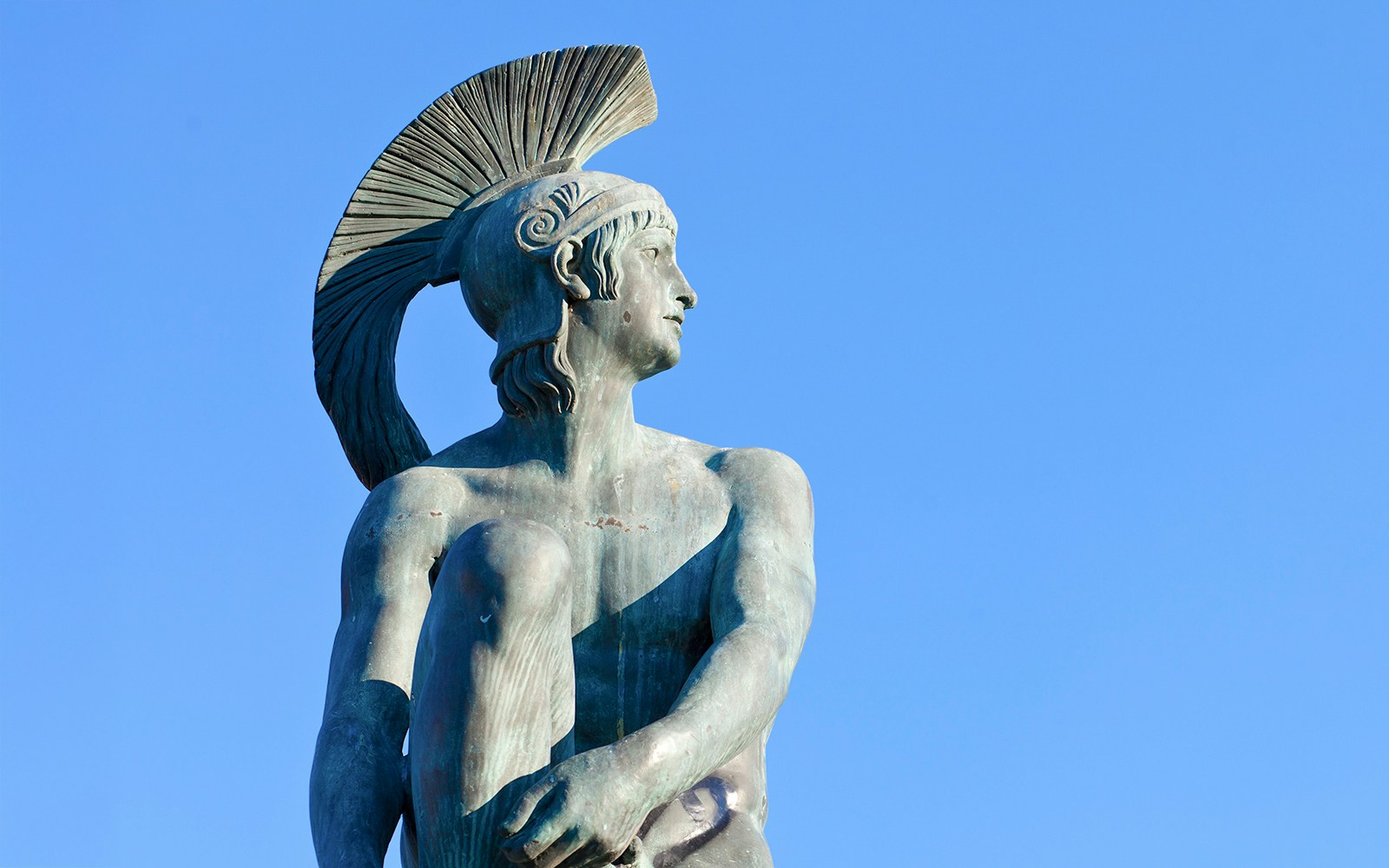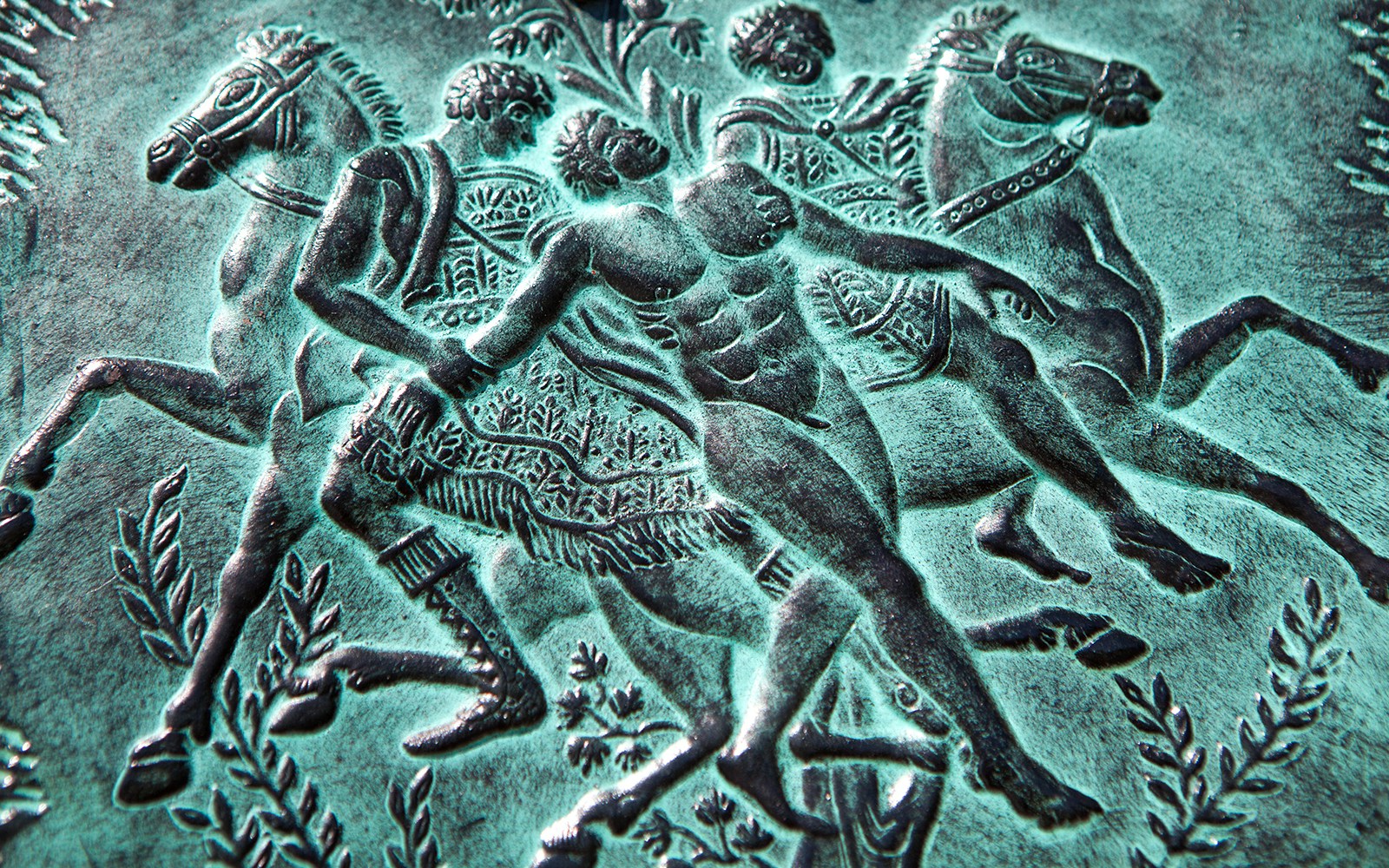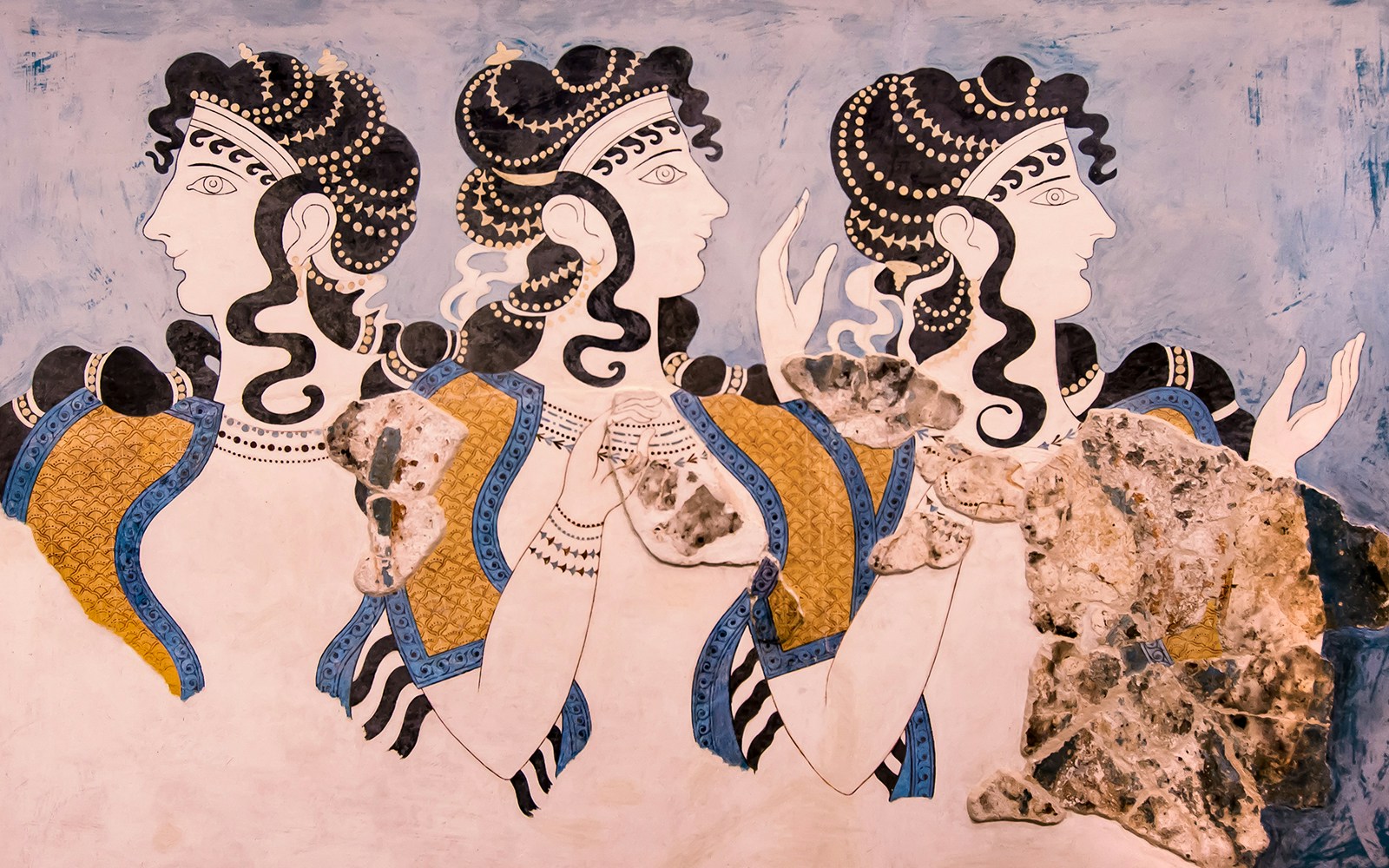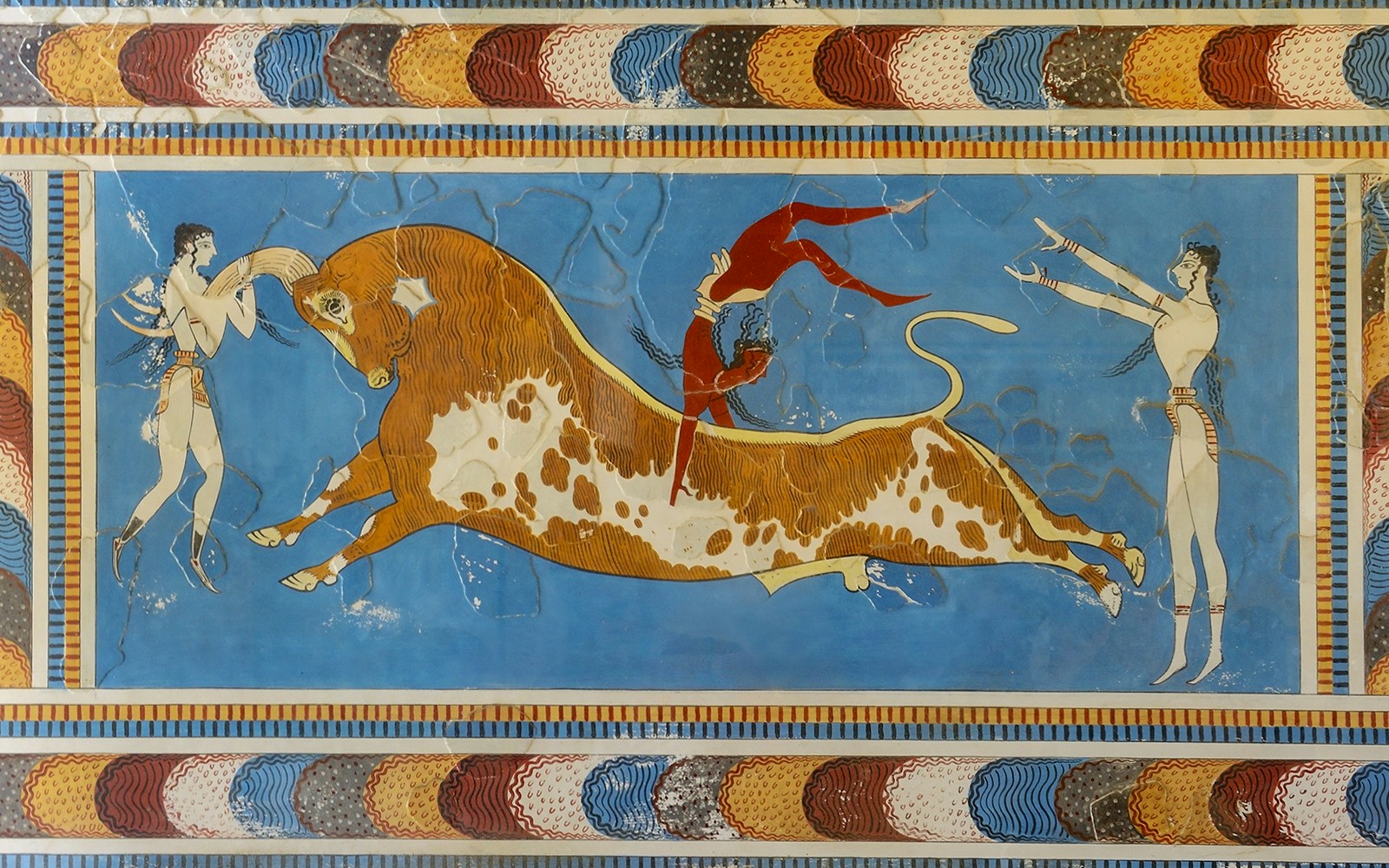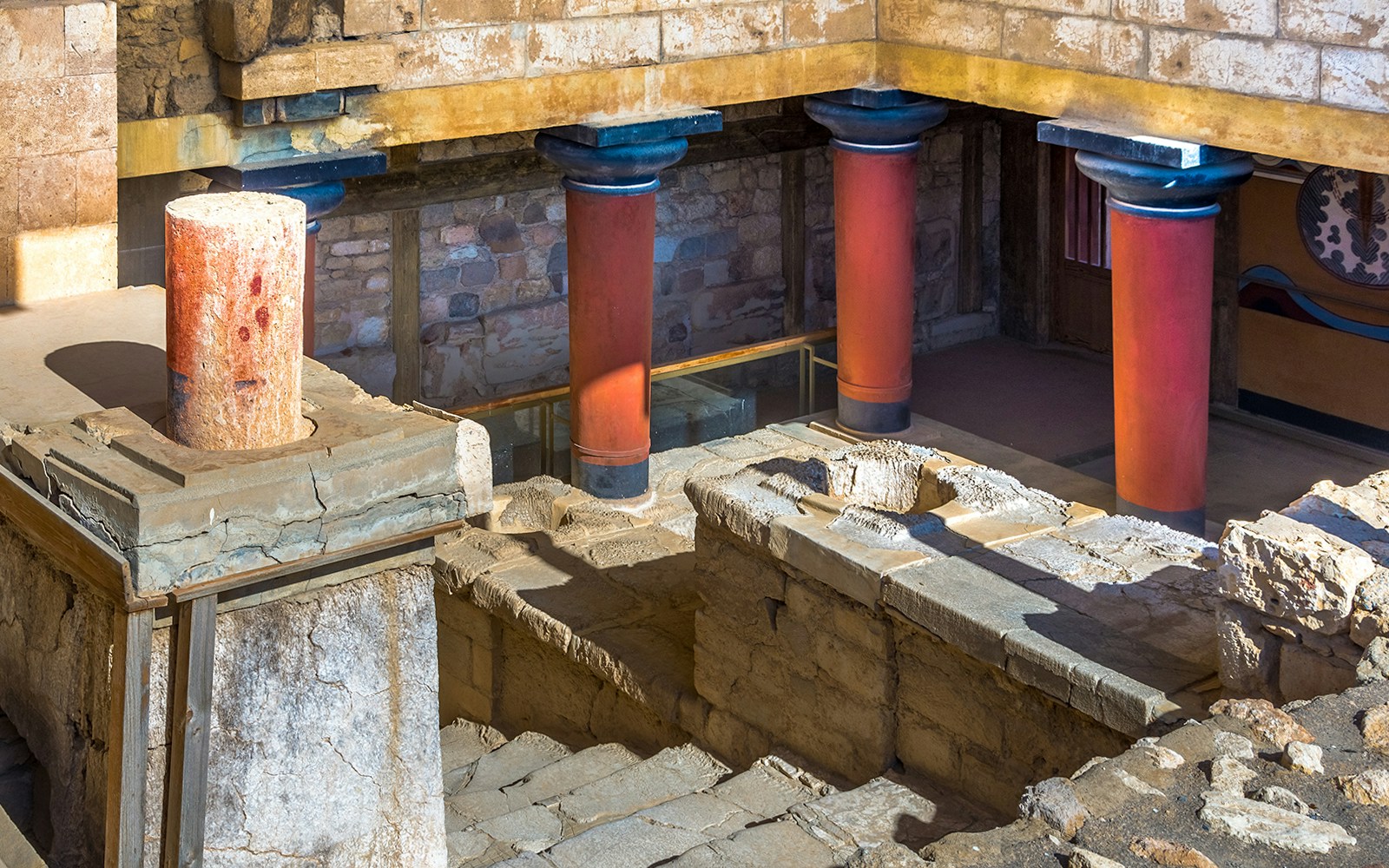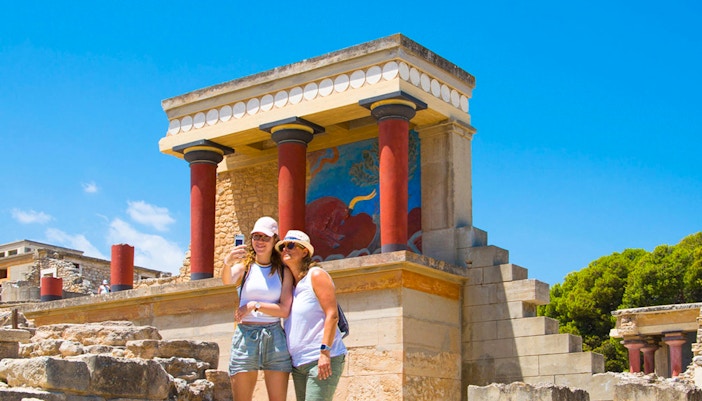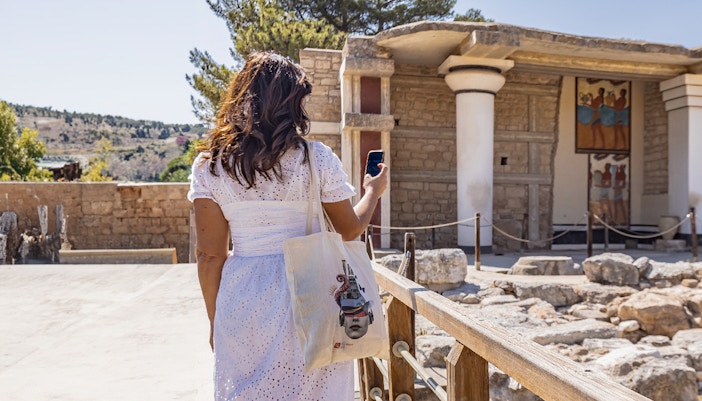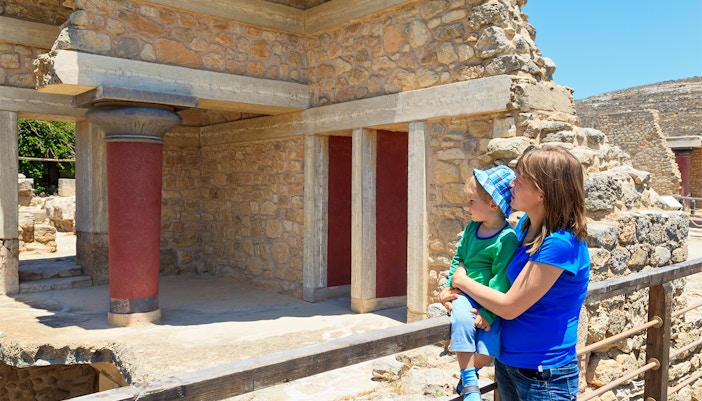Knossos Palace had a highly sophisticated plumbing system, including flushing toilets and stone aqueducts. What’s truly remarkable is the use of terracotta pipes for hot and cold water supply, an innovation that feels surprisingly modern, yet was developed over 3,500 years ago.
Facts about Knossos Palace
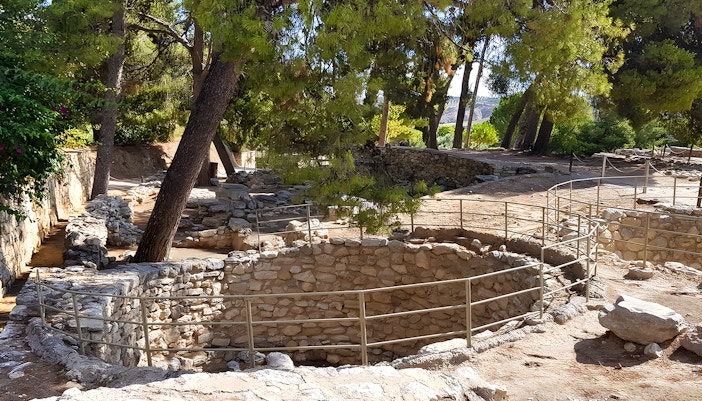
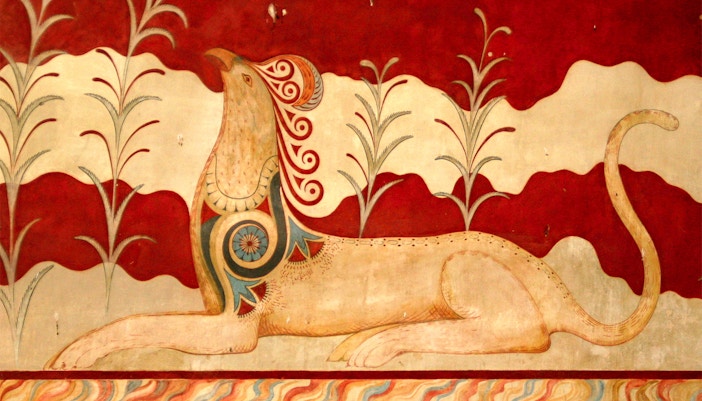
The secret of the red paint
The vivid red walls of Knossos, often called ‘Minoan Red’, are a mix of natural pigments and volcanic ash unique to Crete. This choice wasn’t just for aesthetic purposes; the red color had symbolic and religious significance in Minoan culture, believed to ward off evil spirits.
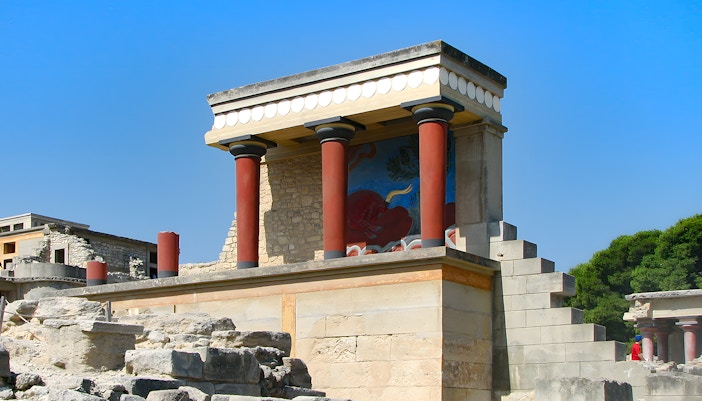
No fortifications
Unlike most ancient civilizations, the palace at Knossos lacked defensive walls or fortifications. This indicates the Minoans enjoyed a relatively peaceful period or held naval dominance in the Aegean region (often referred to as a ‘Thalassocracy’)

A labyrinth of rooms
While the Palace of Knossos is thought to have inspired the myth of the labyrinth, some archaeologists believe that the complex series of rooms and corridors helped control ventilation and temperature in the building, making it comfortable even during hot summers.
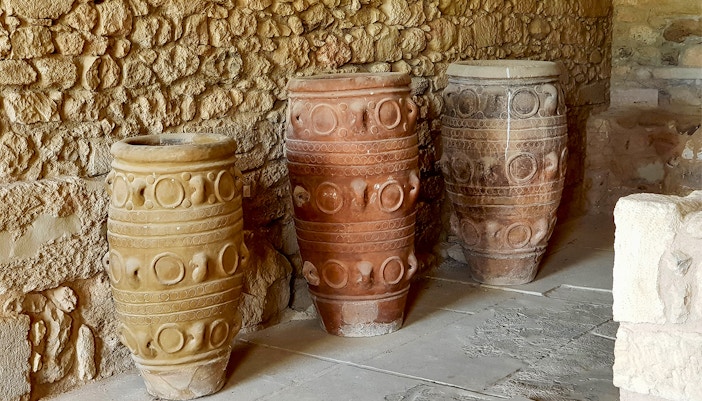
The storage ‘magazines’
The palace included massive storage rooms known as ‘magazines’, where huge pithoi (storage jars) were kept. These jars could hold up to 500 gallons of olive oil, wine, or grains. The storage capabilities suggest the palace served as an economic hub for Crete.
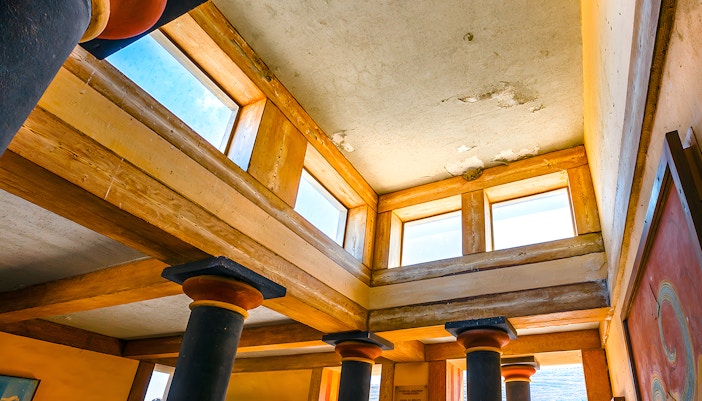
Natural light wells
The Knossos Palace utilized ‘light wells’ to bring natural light into the interiors. These shafts helped illuminate rooms that didn’t have direct access to windows, a brilliant architectural solution that highlights Minoan ingenuity.
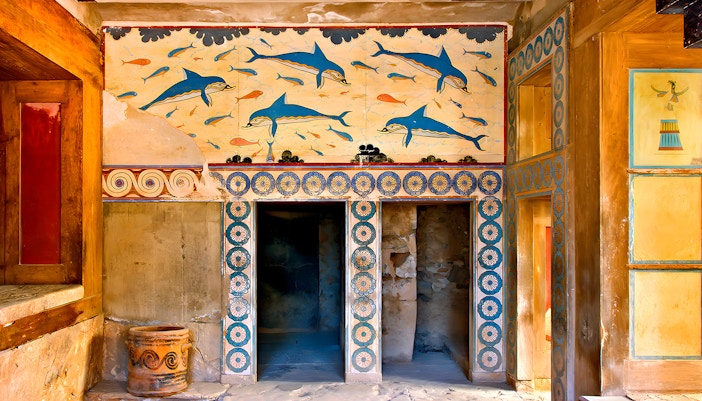
The use of false doors
Archaeologists have discovered ‘false doors’ in the palace, which do not open to other rooms but were part of religious rituals. These were believed to act as symbolic portals to the spirit world or for communication with deities.
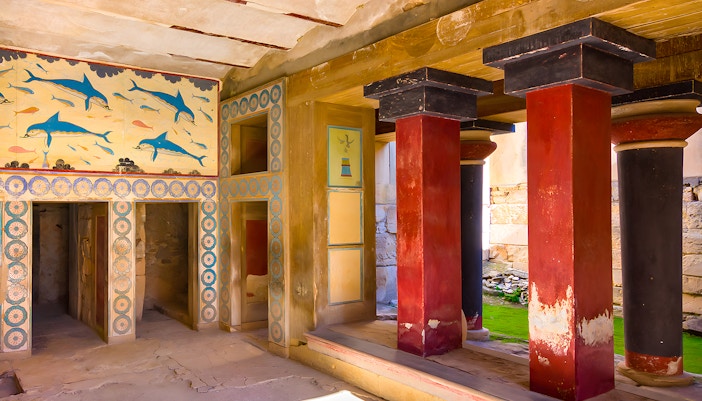
Earthquake resilience
The Heraklion Palace of Knossos was built with earthquake-resistant techniques. Walls were reinforced with wooden beams, allowing them to flex during seismic activity, which helped the palace survive multiple earthquakes over centuries.
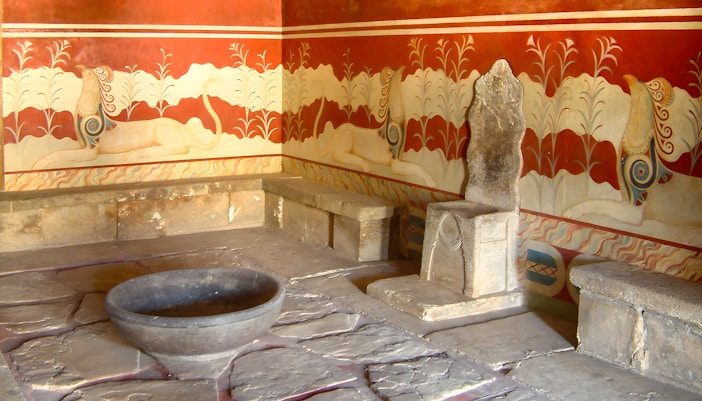
The mystery of the ‘Throne Room’
The Throne Room at Knossos contains a stone chair (believed to be the oldest throne in Europe). Some experts argue this room might not have belonged to a king but was used to seat a priestess, reflecting the likely matriarchal structure of Minoan society.
